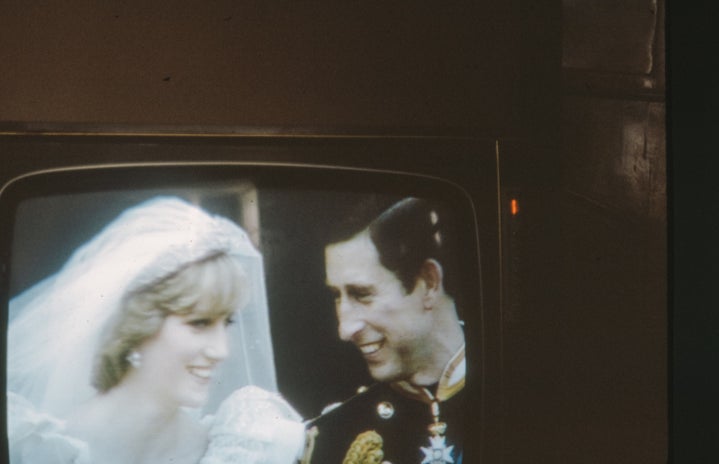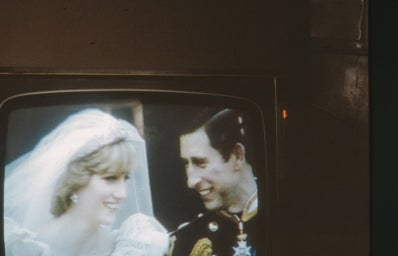It’s here. Finally. Although I look forward to new seasons of The Crown every year, I haven’t anticipated a new season like I’ve anticipated season four. This is the season when the story breaks into an era viewers that can remember (not me, I’m just a bit too young). So, we get to see the dramatic moments that we watched in real life be portrayed on screen. I also couldn’t wait for this season because it’s all about women. Not in a real feminist or girl-power way, but just a lot of content devoted to the development of really famous women. Although The Crown has always revolved around the life of Queen Elizabeth II, this season we see the infamous Prime Minister Margaret Thatcher and, of course, Princess Diana — possibly some of the best-known women in British history. Keep reading to see what I think of this new season.
A quick recap of season three:
When we last saw the royal family, they weren’t in the best shape. Margaret, the Queen’s sister, had just attempted suicide following the exposure of her relationship with Roddy Llewellyn. Charles was in love with Camilla Shand, who was dating Andrew Parker Bowles who was cheating on Camilla with Anne, Charles’s sister. Lots of cheaters in this family. But Camilla and Andrew got married and Charles and Anne were devastated, resenting the Queen and Lord Mountbatten for arranging the marriage and effectively ruining their messed-up love lives. Charles continued to see Camilla Parker-Bowles anyway.
And that’s what you missed on The Crown *says in the high-pitched voice from the Glee intro*
Season four summary:
This is our second season with Olivia Coleman as Queen Elizabeth II, seeing her transition as a mother and as a ruler. As the series moves into the 1980s, new characters emerge including Margaret Thatcher, (played by Gillian Anderson who you might recognize as Jean from Sex Education) the first female prime minister of the United Kingdom and Lady Diana Spencer (played by Emma Corrin).
After the IRA rose to power and demanded independence from the United Kingdom, they attack the royal family while on holiday in Scotland, resulting in the death of Lord Mountbatten. Charles is crushed, as Lord Mountbatten was essentially a father to him, and who is there to comfort him but Lady Diana Spencer. After some charmingly awkward first encounters and significant encouragement by their respective families, Charles proposes to Diana and she accepts. They spend the majority of their engagement apart; Diana stays at the palace learning the intricacies of royal life and procedures from her stoic and austere grandmother while Charles goes abroad, continuing his intimate relationship with Camilla.
While isolated and ignored by the royal family and her soon-to-be husband, Diana’s eating disorder worsens.
Eventually, Diana and Charles marry in the iconic wedding of the century. (The replica of Diana’s dress is seriously impressive.)
Their marriage quickly deteriorates following the birth of their first child as they soon realize they have pretty much nothing in common. It also doesn’t help that Diana is universally adored by royal family fans and regular citizens alike, drawn to her gusty disposition and humble attitude. As Charles continues his affair with Camilla Parker-Bowels, Diana finds other suiters of her own. Although they attempt reconciliation repeatedly, their marriage is destined for failure. Viewers familiar with the historical basis for the show know how it ends, and the show is clearly leading up to some major Charles and Diana explosions in the next season.
Meanwhile, Margaret Thatcher continues to shake up the government, dismissing her cabinet members that don’t agree with her to implement significant spending cuts, virtually sending the country into an economic recession. Viewers who watch the show for the historical bits will be thrilled with some of the moments from her terms as Prime Minister. That includes the appearances of Michael Fagan (you might know this actor as a drug addict and amateur chemist from Sherlock), the man who broke into the Queen’s bedroom and Thatcher’s unwillingness to institute economic sanctions to end apartheid in South Africa.
As far as Princess Margaret goes, she is still deeply depressed and struggling to find her role in the monarchy as she ages. She’s still depressed by the end of the season.
Overall, season four of The Crown focuses on three very different women – Diana, Margaret Thatcher, and Queen Elizabeth II – and how those who do not agree with the crown must either bend to the tradition or break from the pressure.
Some thoughts on season four:
- Margaret Thatcher is not a feminist.
-
I don’t claim to be an expert of English history or some royal-family-obsessed fan, but I do know that Thatcher was not some revered Prime Minister loved by all. She was hated by a lot of people as they disagreed with her economic policy, stripping the country of its social programs and believing in the power of tenacity and hard work, resulting in rampant unemployment and widespread societal discontent.
This is why I’m glad they didn’t try to show her as some trail-blazing fem-goddess because she wasn’t. She still cooked dinner for her husband every night and checked every female archetype you can mention.
Just because she was the first female Prime Minister of the United Kingdom, by no means qualifies her to be an advocate for women.
I will admit she had some real zingers though; “Not if one is comfortable having enemies.” “Are you?” “Oh, yes.” Iconic.
- Charles is literally the worst.
-
Again, I’m unsure to the extent of which these events are historically accurate, however, Prince Charles is portrayed as the worst husband of all time. I know Diana cheated on him too, but he cheated first and more often! I also know that Charles is partially just still seeking affection as a result of his absent and distant parents, but that doesn’t give him the right to act as he does.
That does call into question some biases from the writers and directors. Diana is the “People’s Princess,” however, she is not completely blameless in the failure of their relationship. So, why do viewers get the impression that Charles is to blame, and Diana is the victim?
- Where’s the Queen?
-
In seasons one and two, Elizabeth (Clair Foy) usually took up most of the screen time and the rest simply play ensemble to her journey as Queen, however, this season is different. Because she is already established and has been on the throne for almost 40 years by the end of the season, she isn’t all that exciting. Yes, she has some face-offs with Thatcher, and she interviews all her children to decide which of hers is her favorite, but that’s pretty much it. Charles, Diana and Thatcher are the biggest stars of this season.
- Finally, a big family.
-
This season we do get to see more of the family all together, especially during Christmas and holidays in their Balmoral home. This is a welcome change from the previous seasons when either the children were too young to be significant characters or the characters were too old and died.
But now, all of the Queen’s children are adults and all the drama of their marriages and children can ensue. Although the royal family is by no means portrayed as warm or welcoming, they do seem a bit more approachable in these scenes. Like when they are all playing parlor games at Balmoral in episode two, although Thatcher was there for that scene and she didn’t find it very amusing.
- Diana’s outfits are spot on.
-
Since the release of season four on Nov. 15th, British and American media outlets have been comparing some of Princess Diana’s iconic outfits from memorable moments in her life to the extremely well-done replicas in the show. From her colorful sheep sweaters to her monochromatic hat and dress sets, the design department killed it. As they should!
Her style is, arguably, one of the most memorable things about her, and about the 1980s in general. Her ruffly blue and silver ballgown Diana wears at an event in Sydney, during her and Charles’s tour of Australia, is a spot-on reproduction. Diana’s royal blue and white dress with a tie at the neck wore during their engagement announcement is a perfect recreation from that highly visible moment.
The entire photo op with Charles, Diana and baby William in Australia is shot-for-shot, especially her blue polka-dotted dress with her standard giant white collar. And of course, Diana’s wedding dress, with its puffed sleeves, ruffled collar and tiara veil was made to perfection.
They obviously devoted a lot of time and resources to this aspect of the show which, as in any historical drama, is incredibly important because you can only get an actor looking so close to the original person (btw the actors are like doppelgängers they look so similar) but the clothes you can get close to identical.
- Trigger warning: Diana’s eating disorder.
-
Viewers are notified of the portrayal of it before each episode it’s in, however, it could still be a trigger for those that struggle with eating disorders. What I think is most impactful about Corrin’s portrayal of it is that you see traces of it even when she’s not in private, like in episode three, “Fairytale,” when Diana meets Camilla for lunch.
Camilla goes on and on about all these intimate details about Charles that Diana doesn’t know, practically throwing their affair in her face, which triggers Diana, and she starts displaying some signs of her disorder, right there, in the restaurant.
This is probably another reason why, as viewers, we have more sympathy for Diana and hate for Charles than the other way around. Regardless, her spiral and self-hatred are intense and hard to watch at moments, indicators of excellent television.
There are some things I like about this season and there are some things I don’t like about it. But to be honest, even if I hated this season, I would probably still watch it. Maybe in season five *crosses fingers*, the writers will make a “creative” decision to not have Diana die. Here’s to hoping.


